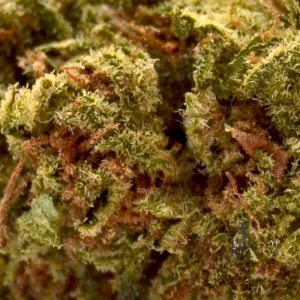Pulegone – What Is It? All You Need To Know About Pulegone

Pulegone
ˈpyü-le-, gōn | noun
A secondary monoterpene with a potent peppermint aroma. Due to its fragrant scent, this terpene is used in flavoring agents, perfumes, and aromatherapy. Like many terpenes, it’s an effective insecticide. Researchers are investigating its potential to help the brain store memory by curbing memory-inhibiting properties, and its anti-anxiety and psychostimulant effects.
“I am tasting a sweet minty flavor in this hemp pre-roll; maybe it contains pulegone terpene.”
“Did you know that pulegone is a terpene present in hemp that’s also used as an effective insecticide?”
What is it?
It’s a fragrant, liquid monoterpene with a sweet, minty aroma comparable to menthol. Due to such qualities, it’s often used as a scent and flavor enhancer. This terpene is considered one of the top three most effective ingredients to act as an insecticide. Because it’s such a potent insecticide, if consumed in large quantities, can be potentially toxic. A natural source of this terpene is the palo santo, or holy stick tree, native to Mexico, Peru, and Venezuela.
Everyday uses of pulegone
Catnip is a source of pulegone, so if you’ve ever used the plant for yourself or your feline friends, you’ve experienced this terpene. Other natural sources of this terpene are the palo santo, or holy stick tree, and some members of the mint family like pennyroyal and creeping Charlie plants. Many perfumes and aromatherapy products with a signature cool, fresh scent may include it in their formulas.
This terpene may be part of peppermint candies, baked goods, and flavor alcoholic beverages, but only in its natural form. In 2018, the Food and Drug Administration removed the use of synthetic pulegone from the food additives list. The FDA stated that pulegone’s natural counterpart and its use as a food additive is not affected by this decision. Meaning, natural pulegone can be used in food, labeled as a natural flavor. Despite this ban, the FDA concluded that the intended use (only in small quantities) of this synthetic flavoring in food did not pose a risk to public health.
Therapeutic benefits of pulegone
This terpene is a component of pennyroyal oil, and in that form, has been used to treat various conditions, including colds, headaches, indigestion, and menstrual symptoms. As an isolated compound, it has shown potential benefits for the treatment of anxiety. But, just like with any terpene, further research in humans is needed.
Anti-anxiety properties
One 2014 study found that pulegone terpene showed anti-anxiety effects in mice. The study was published in Biological & Pharmaceutical Bulletin and also revealed that this terpene might possess psychostimulant effects that can improve motor and mental function.
The role of pulegone in hemp
As a secondary terpene, it’s present in trace amounts in some hemp strains. You can also find it in some broad spectrum and full spectrum hemp CBD products. The importance of this terpene in hemp relates to the entourage effect or the theory that all hemp compounds work in synergy to increase the plant’s healing potential and effectiveness.
Final thoughts
A terpene with a sweet, minty flavor and potential anti-anxiety qualities. Pulegone is also known as one of the most powerful insecticides among nature’s terpenes.















